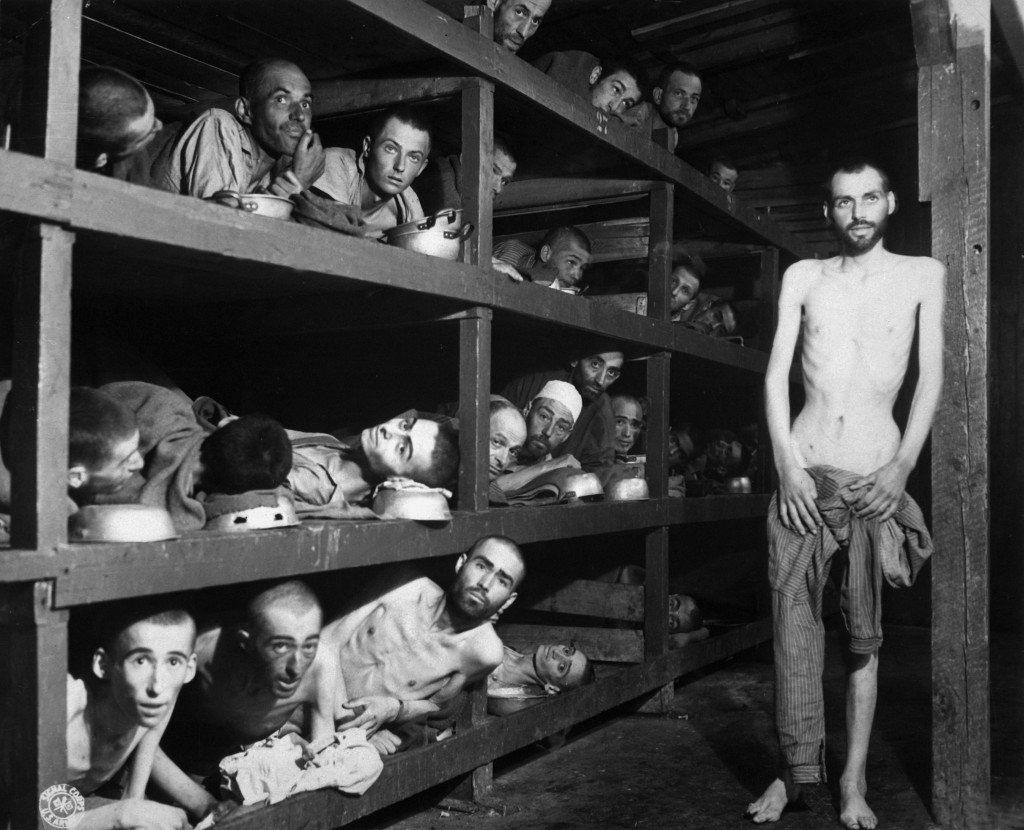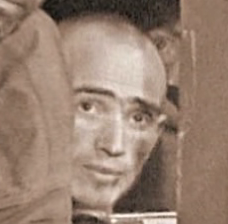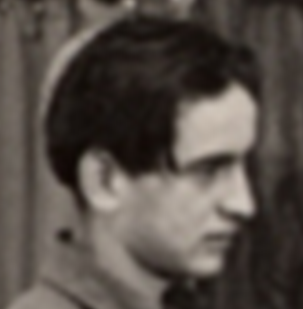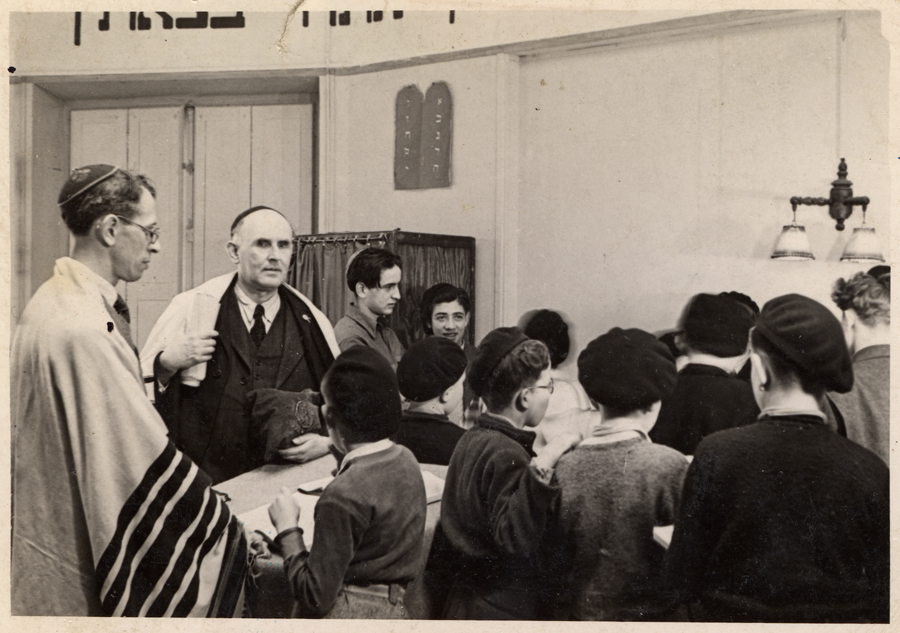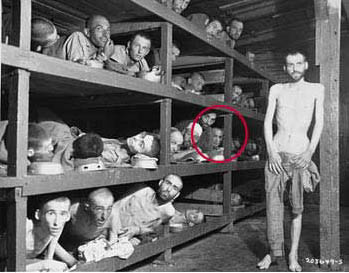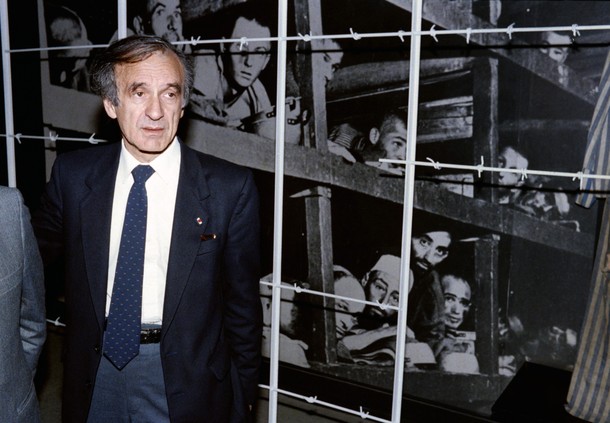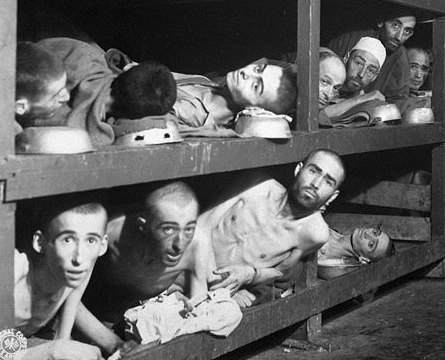Gigantic Fraud Carried Out for Wiesel Nobel Prize
By Carolyn Yeager
Proof that the man in the famous Buchenwald photograph is NOT Elie Wiesel.
With the help of the New York Times and the U.S. Holocaust Memorial Museum, Elie Wiesel and his backers did not shy away from criminal deceit by purposely misidentifying an unknown face in this famous photo as belonging to Elie Wiesel.
The above high-resolution photograph of Buchenwald survivors was first published in the New York Times on May 6, 1945 with the caption “Crowded Bunks in the Prison Camp at Buchenwald”. It was taken inside Block #56 by Private H. Miller of the Civil Affairs Branch of the U.S. Army Signal Corps on April 16, 1945, five days after the Buchenwald camp was liberated by a division of the US Third Army on April 11, 1945. None of the men in the picture were identified at that time.
The U.S. Army photographer was in block #56, not #66
The U.S. Army photographer said he was inside Block #56. The “children’s block” that housed the so-called “boys of Buchenwald” was #66. This was not a typo. Note that these men are not children or teenagers, except for the youngster on the lower left who has been correctly identified as 16 yr. old Myklos (Nikolaus) Grüner, and a couple others. These adults appear to be a mixture of sick individuals suffering from a wasting disease (Grüner learned after liberation he had TB), along with basically healthy men who were also in that block for some reason five days after they had been freed. As we have read from many Buchenwald inmates, they moved about at will from the day of liberation onward. In Elie Wiesel’s book Night, he even says that some of the boys in his block went to the city of Weimar the very next day to steal potatoes and rape girls.
The true facts of this photograph have never been told and perhaps are not known. (Grüner has written in Stolen Identity that he left a procession of youths being led to the camp entrance on the morning of April 11, scurried into the nearest barracks and jumped into an empty bunk space. It turned out to be this one.) But because of the man standing there stark naked except for a piece of clothing held in his hands to cover himself, this photograph was likely staged. In any event, it was never represented as the “children’s barracks.” Still, Elie Wiesel inexplicably once told an interviewer for the German weekly Die Zeit that this picture was taken in the Children’s Block and all these men were really teenagers even though they looked old. (Source: “1945 und Heute: Holocaust,” Die Zeit, April 21, 1995.)
Kenneth Waltzer wrote to EWCTW on Nov. 14, 2010: “Eli Wiesel was indeed the Lazar Wiesel who was admitted to Buchenwald on January 26, 1945, who was subsequently shifted to block 66…” and Waltzer repeated in another comment on June 27, 2011 that “— after his father died — Elie Wiesel was moved in early February to block 66, the kinderblock. Miklos Gruner too was in block 66. Elie Wiesel was there with other boys from Sighet, who knew him.”
But we are also to accept that on April 16 Wiesel was in block 56, even though he didn’t report any such move in his book Night. In fact, in that fictitious story Wiesel says he became deathly ill with food poisoning three days after liberation (April 14) and spent the next two weeks in hospital (pg 115, Marion Wiesel translation). That in itself precludes his being in this photograph taken on April 16!
Whom do you believe—the New York Times or your own eyes?
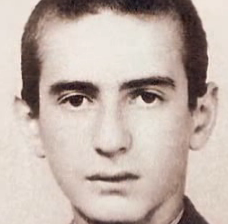 Not Wiesel at age 16 in 1945
Not Wiesel at age 16 in 1945
You can see for yourself from these two high-quality photographs supplied to me by a helpful reader that the face on the left is not Wiesel. On the right is Elie Wiesel in 1944 at the age of 15.
The inmate on the left definitely has an aquiline nose and full, even sensual, lips. In this close-up, the receding hairline is visible on the recently shaved head. On the right, the real 15-year-old Elie Wiesel exhibits a normal youthful hairline, a differently shaped nose and thinner lips. He also has a higher forehead than the more roundish-headed inmate. The eyes of the man on the left are not as deep-set under the eyebrows. His somewhat surprised, curious expression is not typical of Wiesel, whose expression was generally reserved, and often hooded.
The close-up on the left appears to be the real Elie Wiesel in France later in 1945. He would be 17 or almost 17 years old in this picture. Notice the non-receding, youthful hairline with a long front lock hanging to the side, and the slightly concave curve of the nose .
This close-up image is from the photograph below, which is found at the USHMM Survivor Resource Center with the caption given below.
Jewish boys gather for a prayer service in a chapel in an OSE children’s home. Those pictured include Elie Wiesel (seen in profile, back right) and Jakob Rybsztajn standing next to him facing the camera.
(I note that Elie Wiesel is older than the other boys in this picture, giving credence to the idea that he acted in the role of counselor and sometime teacher to the newer, younger “religious” boys.)
Notice again the slight concave curve of the nose, the high forehead, deep-set eyes, large ears, sensitive mouth and slender neck. But also look at all that hair! The date of this picture is given by USHMM as 1945 and the location as Ambloy, [Loir et Cher] France. It says in the accompanying text “In October 1945 the children and staff of Ambloy were relocated to the Chateau de Vaucelles in Taverny (Val d’Oise).” That means this picture was taken between June and October 1945. They could have been celebrating Rosh Hashana, Yom Kippur or Sukkot.
But could his hair have grown to such a length from a shaved head in April 1945? No way, and thus this is another proof that the liberated Buchenwald inmate with the shaved head is NOT Elie Wiesel.
A PDF from my valued contributer examines the ages of the small group more closely. Take a look:
Who first identified Elie Wiesel in the famous Buchenwald liberation photo?
In October 1983, the New York Times published this photograph as part of an article in its high circulation Sunday NYT Magazine with the caption: “On April 11, 1945, American troops liberated the concentration camp’s survivors, including Elie, who later identified himself as the man circled in the photo.”
Coincidentally, it was 1983 when Wiesel’s friend Sigmund Strochlitz began campaigning for a Nobel prize for Wiesel. Letters of nomination are due into the Nobel committee by Feb.1 of each year, so by January 1984, the committee was receiving letters nominating Wiesel from U.S. Senators such as Daniel Moynihan and Barry Goldwater. (see “How Elie Wiesel Got the Nobel Peace Prize“) The effort continued, with new and ever more innovative ideas, through 1985 and 1986 with the help of John Silber, President of Boston University, Wiesel’s employer. Hundreds were enlisted into the effort.
The 1983 article in the New York Times that was the opening gun of the campaign was written by Jew Samuel Freedman and titled “Bearing Witness: The Life and Work of Elie Wiesel.” It included this line: “His name has been frequently mentioned as a possible recipient of a Nobel Prize, for either peace or literature.” Well, it had just begun to be mentioned … by this team of cheerleaders.
Wiesel pretends that he had nothing to do with it. In an interview in France in 2009, he said: “If you fight or if you do scientific research to get the Nobel, you never succeed and you should not succeed.” (Elie Wiesel, “messager de la memoire”) No, he did not fight but his mercenaries fought for him, and he used this photograph as his “research.” That this photograph played a large role is shown by the fact that immediately after the Nobel award ceremony in December 1986, Wiesel went to Yad Vashem Memorial in Jerusalem and posed in front of its prominent display there.
Elie Wiesel on Dec. 18, 1986 at Yad Vashem in Jerusalem
After the award was announced by the Nobel Committee, the New York Times published again on Nov. 1 a severely cropped version of the Buchenwald photo (below) with the caption: “Elie Wiesel, the winner of the Nobel Peace Prize (at far right in the top bunk) in the Buchenwald concentration camp in April 1945, when the camp was liberated by American troops.” The picture accompanied an article by Jew Martin Susskind titled, “A Voice from Bonn: History Cannot Be Shrugged Off.”
The role played by the tax-payer funded United States Holocaust Memorial Museum
Elie Wiesel finagled his way to becoming Founding Chairman of the United States Holocaust Memorial Council in 1980 after being chosen in 1978 by President Jimmy Carter as chairman of the President’s Commission on the Holocaust. Why the United States needed to do anything at all about the “Holocaust” is something only the 2.5% Jewish population in this country can answer. It is to satisfy them. Wiesel continued to chair the Council until 1986, when he reached his goal of becoming a Nobel Laureate. The USHMM was undoubtedly an important institutional heavyweight that leveraged him to the Nobel.
The USHMM naturally accepted that Wiesel was in the famous photograph as soon as he and the New York Times said he was. If you think the museum staff does real research, is searching for truth and/or is engaged in scholarship of any kind, you are badly mistaken. The museum represents official power only and is invested in keeping it in Jewish hands.
This photograph is the only document tying Elie Wiesel to the Holocaust
The only document that connects Elie Wiesel to the Auschwitz-Birkenau and Buchenwald experience he claims to have—in other words, his claim to be an authentic “Holocaust survivor”—is the famous Buchenwald liberation photograph. There are no records with his name and birth date for either camp. His books do not support his presence there very well. That’s why the Wiesel promoters, who wanted to anchor their man’s claim to be the unchallenged spokesman for the world’s greatest victims—which winning a Nobel prize would surely do—decided that they could pawn that unknown face off as the face of Wiesel. This decision was made in 1983. It’s certain that Elie Wiesel took part in making it, though the pretense is kept up by all that he was aloof from the entire process.
What you must do
When you comprehend the immense power that this simple photo comparison and commentary gives us, you know that we have it in our hands to break down the Wiesel legend if this knowledge is widely circulated. If you understand this, you know what you must do. You must post this article everywhere you can, you must tell everyone about it, send it to all you know … make sure that this photo comparison moves through the Internet and finds a home in as many places as possible. And keep it up, because once is not enough. I’ve done my part, readers. Now it’s up to you.

